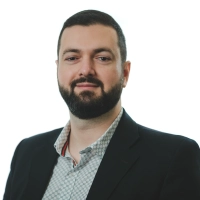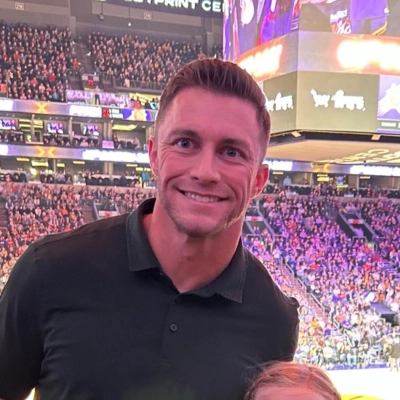Startup Team Mistakes: 13 Lessons Learned and Courses Corrected
Building a successful startup team is a critical challenge for entrepreneurs. This article shares valuable lessons learned and courses corrected by seasoned founders and industry experts. Discover key insights on cultural fit, complementary skills, and team alignment that can help you avoid common pitfalls and build a stronger, more effective startup team.
- Prioritize Cultural Fit Over Speed
- Hire for Complementary Skills
- Value Mindset Alongside Skillset
- Balance Chemistry with Functional Excellence
- Focus on Team Alignment
- Seek Enthusiasm and Right Fit
- Hire for Growth Potential
- Implement Collaborative Trial Periods
- Define Clear Roles and Responsibilities
- Prioritize Execution Over Experience
- Assess Real-World Performance
- Align Values with Talent
- Evaluate Cultural Fit Through Projects
Prioritize Cultural Fit Over Speed
One mistake I made when building our early startup team was prioritizing speed over fit. In the rush to get help and fill gaps, I hired a few people who looked great on paper but didn’t really align with our culture or understand the realities of a scrappy, fast-moving startup environment. As a result, there were miscommunications, some resentment, and turnover that cost us time and momentum.
What I learned is that in a startup, skills alone aren’t enough — you need people who are adaptable, collaborative, and genuinely bought into the vision. After realizing this, I slowed down our hiring process. I started involving more team members in interviews, asked more scenario-based and value-oriented questions, and was transparent with candidates about both the challenges and opportunities of working with us. That shift led to a much stronger, more cohesive team that’s not only capable but also deeply invested in our mission.
 Philip Ruffini
Philip Ruffini
Co-Founder, Hire Overseas
Hire for Complementary Skills
One of the biggest mistakes I made when building my early team at CalTek Staffing was hiring people who were too similar to me. I brought on recruiters who were strong in cold-calling and client relationship-building, skills I already possessed. What I failed to recognize was the importance of hiring for complementary strengths. Without a mix of perspectives, we missed opportunities to think creatively and grow more strategically.
As a result, while we were able to close deals early on, our pipeline stalled. We lacked the marketing, lead nurturing, and operational skills needed to expand our client base and scale effectively. That experience taught me a critical lesson: hiring a team of clones limits your growth and blinds you to what your business truly needs.
To course-correct, I changed how I thought about building a team. I focused on hiring for balance rather than duplication, seeking out people who could build systems, manage the pipeline, and bring structure to our growth efforts. I also redefined our ideal candidate profile and restructured our interview process to better evaluate candidates across a wider range of competencies. Once we addressed those gaps, CalTek evolved from a promising but disorganized startup into a sustainable, high-performing firm with a strong reputation in the market.
 Archie Payne
Archie Payne
Co-Founder & President, CalTek Staffing
Value Mindset Alongside Skillset
One mistake I made early on was hiring purely based on skillset without prioritizing mindset. I brought someone in who had an impressive background and could deliver results, but they didn’t really buy into the vision or pace of what we were building at Spectup. It created tension—decisions were challenged not constructively, but defensively, and collaboration started to feel like pushing a boulder uphill. I let it drag on longer than I should have, thinking competence would eventually smooth out the cultural mismatch. It didn’t.
Eventually, I had a blunt conversation and we parted ways. The correction was twofold: first, I began involving more of the team in the hiring process, even informally, just to get a feel for fit. Second, I started asking questions during interviews that were less about what someone can do and more about how they think—how they handle chaos, ambiguity, and tough feedback. Since then, we’ve built a team where I don’t just trust people to do the job, I trust them to carry the spirit of Spectup forward. And that makes all the difference when the pressure’s on.
 Niclas Schlopsna
Niclas Schlopsna
Managing Consultant and CEO, spectup
Balance Chemistry with Functional Excellence
One error I made early on was hiring based on chemistry instead of complementary skillsets. In the initial stages of my insurtech startup, I brought on a friend to help me scale our operations for Mexico. We had great dialogues together, and our values were aligned; however, I didn’t realize that he lacked the necessary execution skills or domain knowledge that we urgently needed at that time. Six months later, I was micromanaging and having to redo the work due to our burn rate still increasing!
The lesson was harsh but clear: team chemistry is useless when not paired with functional excellence.
After that experience, I changed my hiring strategy. I created a “complementarity matrix” that shows the gaps in my team based on stage. I began to distinguish between builders, operators, and scalers and hire accordingly. I now involve outside advisors in final interviews to pressure-test a candidate’s ability to decipher ambiguity and solve problems.
It completely changed my paradigm. In my most recent venture, Pagoralia, every hire has now passed through that matrix – and we are leaner, faster, and more resilient as a result.
The right team not only helps you grow, they keep you alive.
 Martin Weidemann
Martin Weidemann
Owner, Weidemann.tech
Focus on Team Alignment
One mistake I made when building my early startup team was hiring too quickly to fill positions. In the rush to grow, I focused too much on skills and not enough on cultural fit. I ended up hiring a couple of people who were technically capable but didn’t align with the values and work style of the team. This created friction and slowed down progress, as their approach to problem-solving didn’t mesh well with the rest of the team’s collaborative mindset.
The lesson I learned was that skills are important, but cultural alignment and team chemistry are just as crucial. After this experience, I slowed down the hiring process, making sure to focus on finding individuals who not only had the technical expertise but also shared our core values and vision. I started incorporating more behavioral interviews and team-based exercises to assess how candidates would fit within our dynamic. This change helped build a more cohesive team, and we saw a noticeable improvement in productivity and morale.
 Nikita Sherbina
Nikita Sherbina
Co-Founder & CEO, AIScreen
Seek Enthusiasm and Right Fit
One significant mistake I made early on was hiring people simply because they were affordable or available, rather than because they were the right fit. I was so focused on saving money that I ignored red flags in interviews and convinced myself I could instill passion in someone who clearly lacked it. This ultimately cost significantly more in terms of lost time, missed deadlines, and low morale.
The turning point came when I finally let go of a team member who was dragging everyone down and replaced them with someone who had less experience but a much better attitude. Suddenly, projects started moving forward again, communication improved, and the whole team felt a sense of relief. That taught me to prioritize alignment and enthusiasm over just skills or price. Now, I take longer to hire and involve the team in the process. Culture fit isn’t just a buzzword. In a startup, it’s essential for survival.
 Georgi Petrov
Georgi Petrov
CMO, Entrepreneur, and Content Creator, AIG MARKETER
Hire for Growth Potential
One of the biggest mistakes I made when building my early startup team was hiring someone based on their current skill level rather than their trajectory.
On paper, this person was a 10/10. Super experienced, resume full of shiny logos, knew all the tools. But in practice? They moved like someone already tired of startups. No curiosity. No spark. I kept thinking, “Why aren’t they… faster?” But the real issue wasn’t speed—it was hunger.
And I get it now. Startups aren’t about what you’ve done—they’re about what you’re still willing to do.
Meanwhile, the best person I hired that year had a weaker resume, but a ferocious learning curve. They taught themselves new frameworks on weekends. They’d Slack me with product ideas at 10 PM—not because they were overworking, but because they were genuinely excited.
So after that first miss, I started filtering for people on the upswing. Folks who were slightly underqualified for the role, but deeply overcommitted to getting better. I started asking interview questions like: “What’s something you’ve taught yourself in the last 3 months?” or “What part of the job do you want to be dangerous at by this time next year?”
The shift was night and day. Morale went up, shipping speed doubled, and the culture stopped feeling like I had to light fires under people just to get momentum.
 Derek Pankaew
Derek Pankaew
CEO & Founder, Listening.com
Implement Collaborative Trial Periods
I once hired an engineer fresh out of a prestigious bootcamp based entirely on a coding challenge score, only to discover he struggled to collaborate, preferring late-night solo sprints that left the rest of us in the dark. His pull requests piled up without context, and team morale dipped as we scrambled to untangle his work, missing our own deadlines in the process.
To address this issue, I introduced a one-week trial “partner sprint” for all future hires: prospective employees pair with an existing team member on a real task, from kickoff through code review. We also added a couple of behavioral questions about communication style to our interviews. This shift not only caught red flags early—saving us from another siloed superstar—but helped us build a culture where shared ownership and clear handoffs became non-negotiable.
 Jonathan Anderson
Jonathan Anderson
Co-Founder, Green Home Pest Control
Define Clear Roles and Responsibilities
I once hired a “do-it-all” generalist to help with design, copy, and social media, thinking one versatile person would save time. Instead of streamlining work, she ended up juggling unclear priorities, burning out, and leaving us mid-sprint. I realized I’d set her up to fail by not defining her core responsibilities or giving her a clear backlog.
To fix it, I sat down with our remaining team to draft simple role charters for every position, outlining the top three deliverables, key stakeholders, and decision boundaries. Then, for each new hire, we walked through that charter in a two-week onboarding sprint, adjusting it based on peer feedback. That clarity not only prevented overlap and confusion but also lifted our new hires’ confidence—our first-quarter attrition dropped to zero, and everyone knew exactly where to focus their energy.
 Samantha Stuart
Samantha Stuart
Co-Founder, Magic City Pest Control
Prioritize Execution Over Experience
Experience matters, but in the early stage, execution matters more. You need people who are willing to get their hands dirty and build piece by piece. Growth strategy sounds great in a deck, but it doesn’t mean much if no one’s making real progress every day.
Sometimes experience points you toward people who haven’t been on the ground in a while. What you really need are scrappy operators who take ownership and get things done without waiting for permission.
 Alex Smereczniak
Alex Smereczniak
Co-Founder & CEO, Franzy
Assess Real-World Performance
When I hired my first marketing lead, I was dazzled by their resume—big-name agencies, fancy campaigns—and I didn’t dig into how they’d actually work with a scrappy two-person team. Within weeks, it was clear they thrived on top-down directives, not the hands-on collaboration we needed, and our weekly brainstorms turned into awkward monologues. I realized I’d prioritized credentials over how someone actually meshed with our pace and culture.
To fix it, I paused all new hires and introduced a mini “trial project” into our interview process: candidates now spend half a day working side-by-side on a real task and getting live feedback from the team. That hands-on trial not only revealed who could roll up their sleeves and pivot on the fly, but it also became a way for candidates to see if we fit them, too. Since then, every full-time teammate has sailed through that test—saving us from costly mis-hires and building a team that truly thrives together.
 Tony Ragan
Tony Ragan
President, Absolute Pest Management
Align Values with Talent
For me, one of the biggest mistakes I made early on when building my startup team, especially in the real estate space with Vancouver Home Search, was hiring purely based on enthusiasm rather than proven execution. I thought that if someone was passionate and said all the right things, they’d naturally rise to the challenge. However, what I learned the hard way is that passion without performance leads to inconsistency, missed deadlines, and a ton of micromanaging.
In my opinion, the early-stage team needs to be composed of people who can wear multiple hats and still get results without hand-holding. I corrected the course by shifting my hiring process to focus less on what people said they wanted to do and more on what they’d already done. I started asking candidates for real examples of projects they’d owned, mistakes they’d made, and how they measured success. I also began trialing hires on small, time-bound projects to see how they actually worked in real-world conditions before committing long-term.
That shift made a massive difference. It taught me to prioritize action-takers over idea-talkers, and that has shaped the culture of our team ever since.
 Adam Chahl
Adam Chahl
Owner / Realtor, Vancouver Home Search
Evaluate Cultural Fit Through Projects
Early on, I hired based on skill alone. This was a big mistake. I overlooked cultural fit and soon had a team of smart people pulling in different directions. It felt like trying to steer a canoe with five captains, nobody rowing in sync.
The lesson? Shared values matter as much as talent. I started asking better questions during interviews about motivation, past team conflicts, and what success means to them.
I also introduced a trial project phase. Think of it like a first date: low pressure, high insight.
Since then, I’ve built teams that don’t just work, they click. Productivity soared. There’s less drama and more laughter. There are fewer Slack “misunderstandings.”
Now, I look for alignment first, skills second. You can teach someone tools. You can’t teach them not to be a jerk.
Trust your gut. If someone feels off, they probably are. And if your team groans every time one person talks… that’s your cue.
 Mike Khorev
Mike Khorev
SEO Consultant, Mike Khorev

